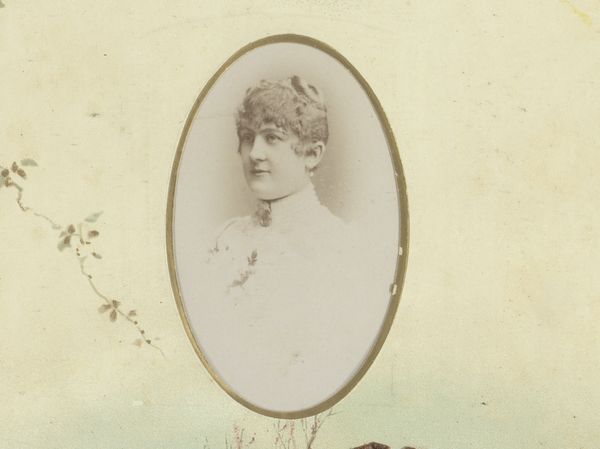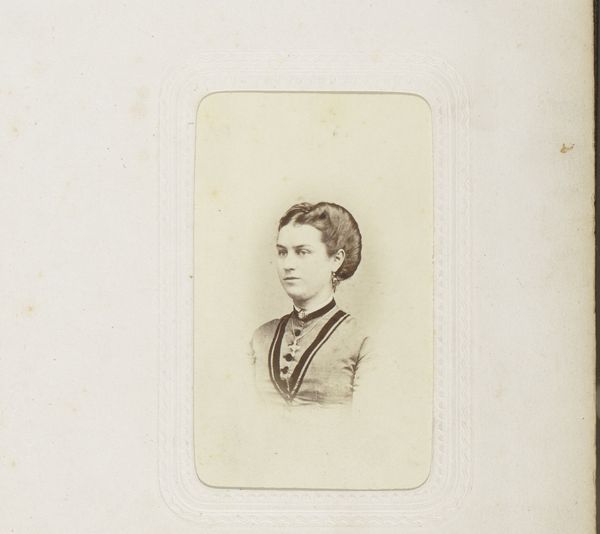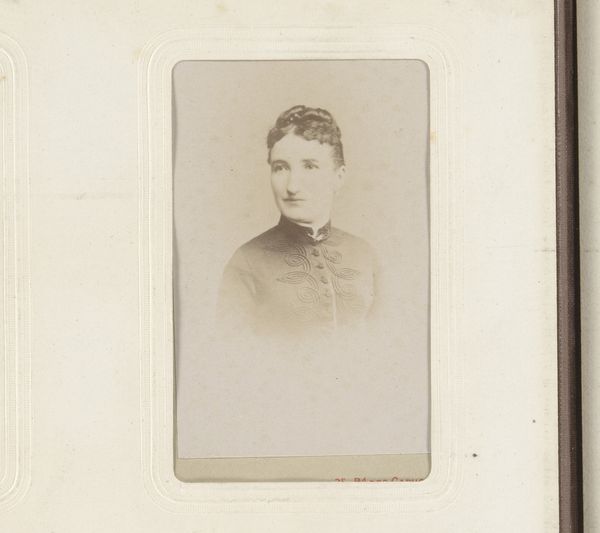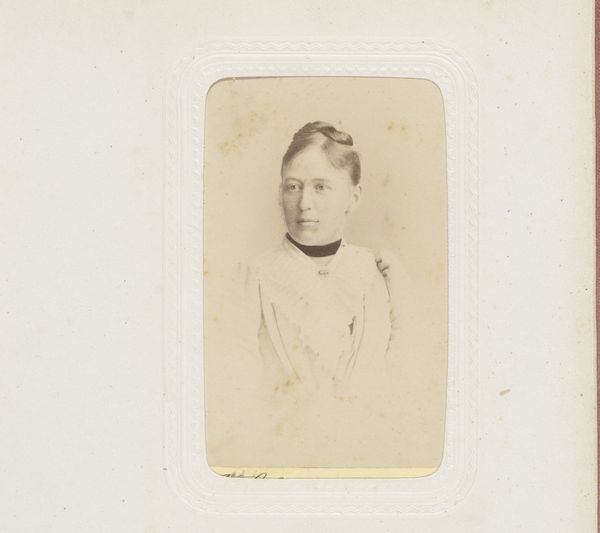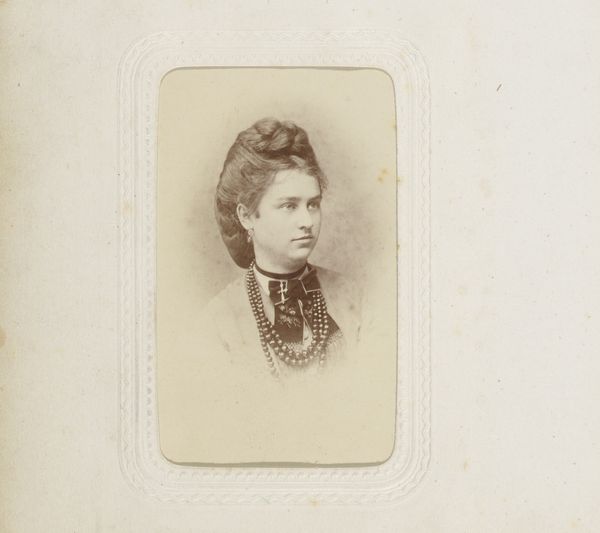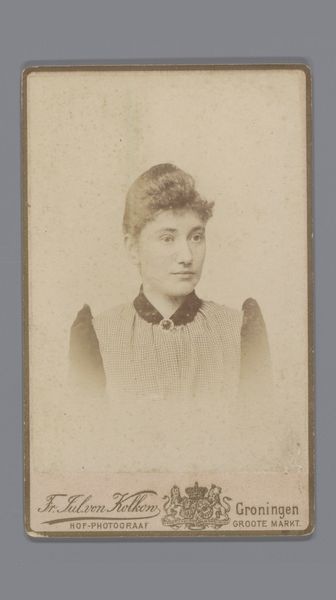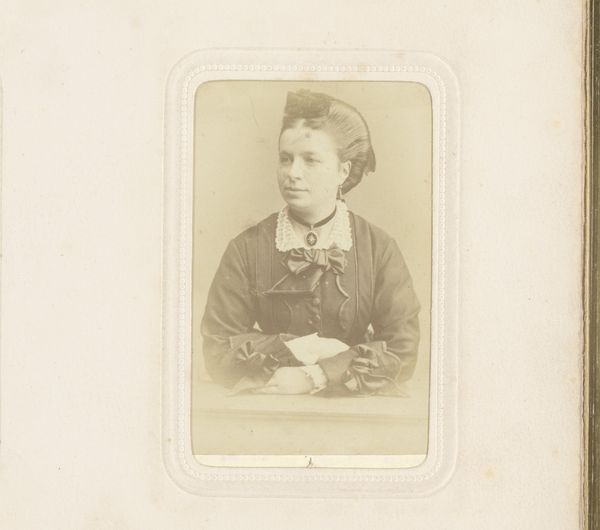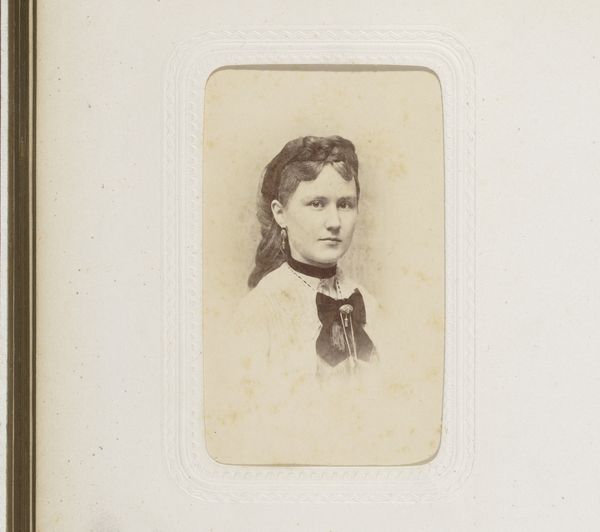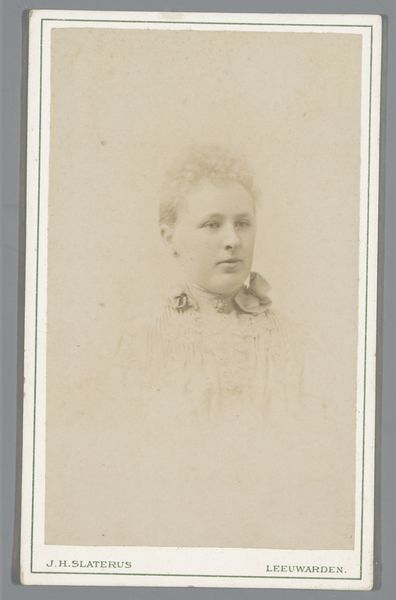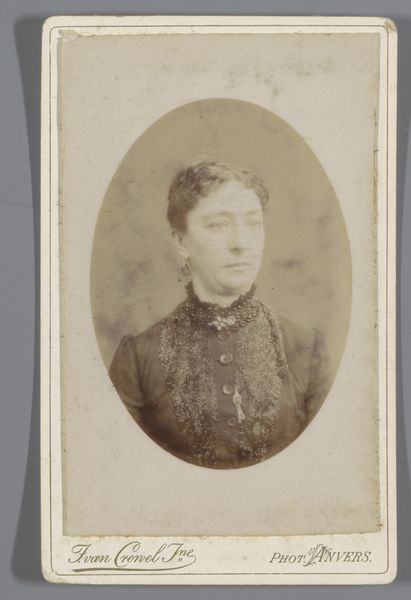
photography
#
portrait
#
still-life-photography
#
pictorialism
#
photography
#
watercolor
Dimensions: height 82 mm, width 49 mm
Copyright: Rijks Museum: Open Domain
Curator: Let’s take a look at a work titled “Portret van een jonge vrouw met een bloem op haar jurk,” or “Portrait of a Young Woman with a Flower on her Dress,” made sometime after 1881 by Louis Oskar Grienwaldt. It's an albumen print, a type of photography common in that era. What strikes you first about it? Editor: The immediate feeling is one of serene melancholy, almost a Victorian daydream. The oval format and sepia tones definitely contribute to that. The young woman’s gaze is directed away, lost in thought. It feels very posed, in that composed stillness so common to early portraiture. Curator: Absolutely. These kinds of studio portraits were carefully constructed to convey a certain social standing and virtue. The young woman’s simple but elegant dress, the single flower – likely a rose – pinned to her bodice, all speak to a cultivated middle-class identity. Photography served as a way to document and reinforce those social norms. Editor: I'm drawn to the rose itself. In that era, roses carried significant weight in the language of flowers, often representing love and beauty, but depending on its color and condition, a darker rose like this could signify mourning or remembrance, maybe a love that is not fully realized. It contrasts with the otherwise delicate features and ornamentation. Curator: The use of photography here moves beyond mere documentation and gets more interesting in this period. Grienwaldt, by emphasizing the flower and employing that oval frame, aligns this photograph with the traditions of painting and miniature portraiture, therefore making a case for its status as a form of high art. Editor: The way she is facing away almost suggests the sitter has inner-conflict or reservation about society’s expectations, but she's also showing pride, so she doesn't appear defiant. What is fascinating is this is how much the setting influences even these types of portraits; it says so much, doesn't it? Curator: Definitely, Grienwaldt's piece encapsulates the social ambitions and constraints of its time, mirroring an attempt to reconcile the objectivity of the camera with the expressiveness of artistic representation. The interplay of the two artforms brings history to life. Editor: Absolutely. It makes me consider our ways of portraiture today, how technology has influenced cultural symbolism and vice-versa. Thanks for offering such insights.
Comments
No comments
Be the first to comment and join the conversation on the ultimate creative platform.


